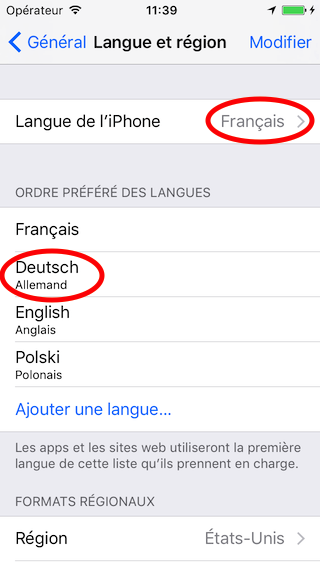My question:
How can my iPhone-app tell the iOS, that the user did select a language in the apps preferences, that is different from the language set in the general settings?
Other formulation of the same question:
How can i tell the system, that NSLocalizedString (@"text", @"comment"); should not access the systemwide selected language, but the in-app-selected language?
background, example:
Please take this situation as an example: A son of german immigrants is living in the north-east of France next to Luxemburg and Germany. His native language is French, so he did set the user-interfaces language of his iPhone to French (Settings → General → International → Language → Français). But due to his cultural background and because the region where he is living is bilingual, he also speaks German very well. But he doesn't speak ten words of English. On an iPhone (and iPad as well) he has no chance to select a second language, so the phone only knows that he spreaks french. It has no knowledge of the users skills in other languages.
Now comes my app: I did develop it in English and German (German is my native language and English is standard-language in IT). I did develop it according to all rules and best practices for mulilingual iOS-Apps. "First" Language (default language) of my app is English.
This means:
If somebody has chosen English or German in his Settings, the apps user-interface automatically will use the selected language. The user will not even notice that there are other languages available.
But if he did select any other language (like Chinese, Polish or French) in the general settings, he will get the apps default-language, which, in my case, is English. But for my french-german friend this is not the best choice. He would like to use the existing german version, but there seems to be no way to let the user select this version.
Adding a french translation would solve the problem for our french-german friend, but not for people speaking two other languages (such as italian and german), and I can not support my app with all languages spoken on this planet. Setting the default-language to German is also not optimal, because this would rise the same problem for people speaking french (as native language) and English (as second language).
So I think my app must have the possibility to manually select a language that is different from the pre-selected language. Adding a language-selection to the apps settings-panel ist not the problem. But how can i tell the system, that NSLocalizedString (@"text", @"comment"); should not access the systemwide selected language, but the in-app-selected language?

